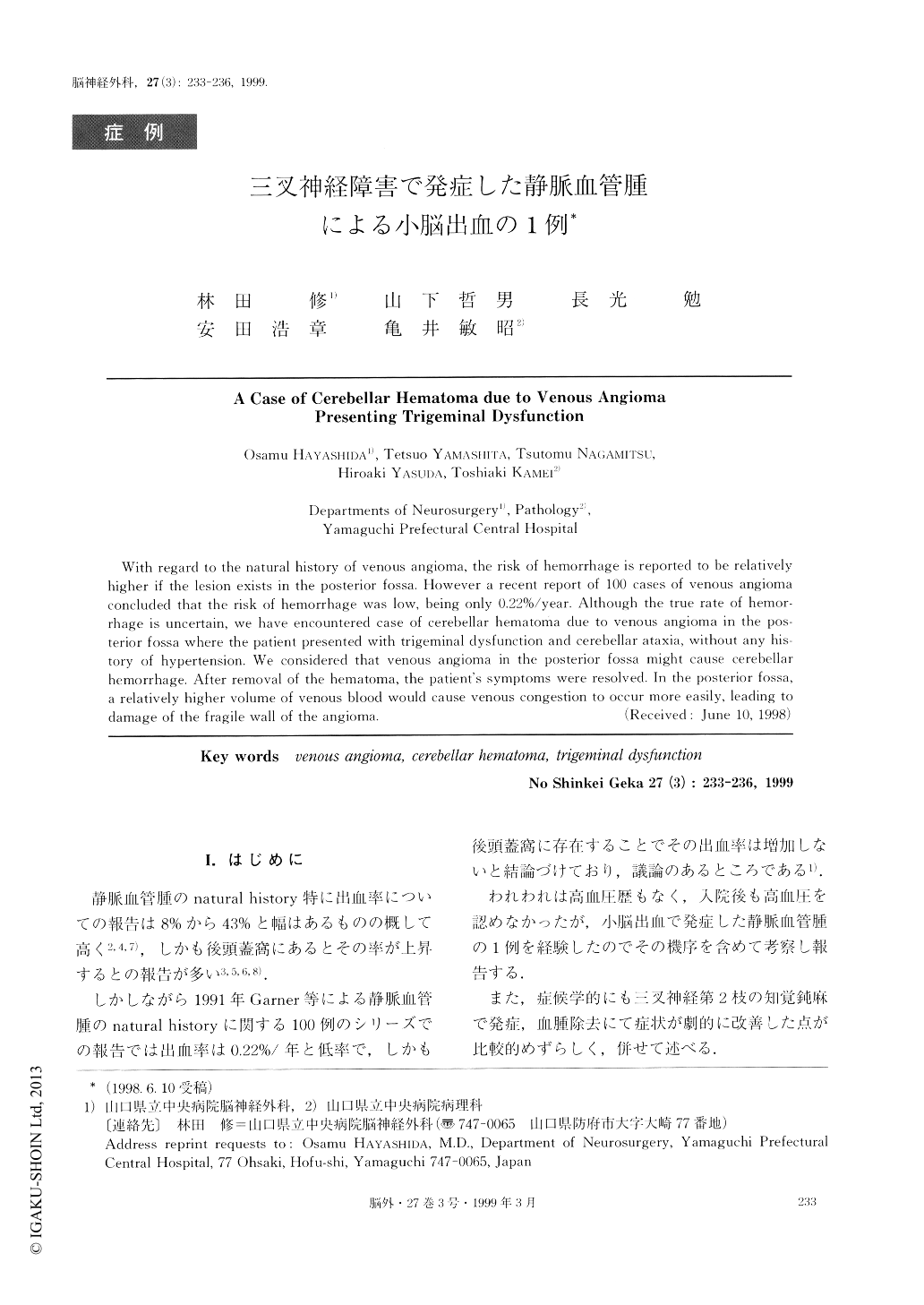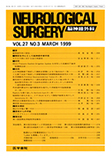Japanese
English
- 有料閲覧
- Abstract 文献概要
- 1ページ目 Look Inside
I.はじめに
静脈血管腫のnatural history特に出血率についての報告は8%から43%と幅はあるものの概して高く2,4,7),しかも後頭蓋窩にあるとその率が上昇するとの報告が多い3,5,6,8).
しかしながら1991年Garner等による静脈血管腫のnatural historyに関する100例のシリーズでの報告では出血率は0.22%/年と低率で,しかも後頭蓋窩に存在することでその出血率は増加しないと結論づけており,議論のあるところである1).
With regard to the natural history of venous angioma, the risk of hemorrhage is reported to be relativelyhigher if the lesion exists in the posterior fossa. However a recent report of 100 cases of venous angiomaconcluded that the risk of hemorrhage was low, being only 0.22%/year. Although the true rate of hemor-rhage is uncertain, we have encountered case of cerehellar hematoma due to venous angioma in the pos-terior fossa where the patient presented with trigeminal dysfunction and cerehellar ataxia,without any his-tory of hypertension. We considered that venous angioma in the posterior fossa might cause cerebellarhemorrhage. After removal of the hematoma, the patient's symptoms were resolved. In the posterior fossil,a relatively higher volume of venous blood would cause venous congestion to occur more easily, leading todamage of the fragile wall of the angioma.

Copyright © 1999, Igaku-Shoin Ltd. All rights reserved.


